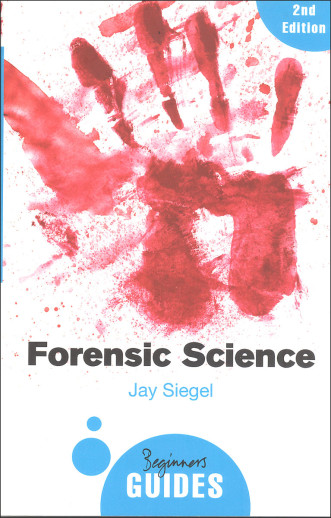We use cookies to make your experience better. To comply with the new e-Privacy directive, we need to ask for your consent to set the cookies. Learn more.
Forensic Science (Beginner's Guide) 3rd Edition
Written for the novice forensic scientist, this guide explores the science and legal applications of forensics including the latest advances and ethics of the field. Beginning with an overview of forensic science, readers learn about forensic science labs, the criminal investigative process and types of evidence, the court system including the admissibility of evidence and expert testimony, and the specialty fields of forensic chemistry and biology. These fields include illicit drugs, fires and explosions, entomology, anthropology, and more. Various types of evidence are also explained. The book concludes with a look at ethics within the field of forensics. Interestingly, the author looks at the field of forensics in the United States and the UK. Throughout it all, he does a very good job of making a scientific field understandable and relevant with clearly written text, numerous real-life examples, and black and white illustrations. Some content may not be appropriate for sensitive or younger readers. The author does a pretty good job of keeping the content clean and technically focused, but body fluids including semen, rape, hit-and-runs, and explosions are covered. Recommended resource for Freedom Project Academy, or any teen who desires to pursue a criminal justice or forensic science degree. ~Deanne
In the wake of the phenomenal success of crime shows like CSI, forensic science has never been so popular. The obsessive attention that Grissom and his crew afford seemingly insignificant details, such as particles of dirt in a bullet wound and the presence of pollen in tyre tracks, have left audiences eager to know more about this field of study.
In this fully revised and updated edition, real-life examples come under the scalpel as forensic scientist Jay Siegel follows the course of evidence all the way from the crime scene to the court judgement. In Forensic Science: A Beginner's Guide, all major areas are covered, including drugs, trace evidence, pathology, entomology, odontology, anthropology, crime scene investigation and the law.
| Product Format: | Paperback |
|---|---|
| Grades: | 6-12 |
| Brand: | Oneworld Publications |
| Author: | Jay Siegel |
| ISBN: | 9781780748245 |
| Length in Inches: | 10 |
| Width in Inches: | 10 |
| Height in Inches: | 0.6875 |
| Weight in Pounds: | 0.4062 |
Be the first to review this item


Required by school
Freedom Project Academy Forensic Science
FPA curriculum.
Same comment as above statement